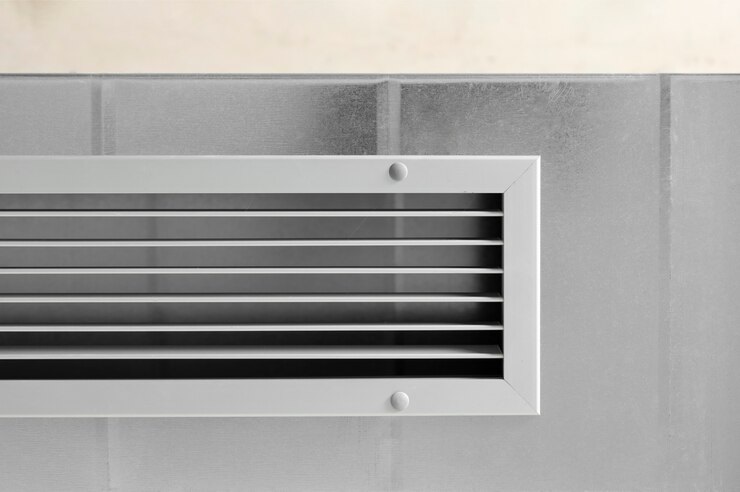Laundry rooms, often the unsung heroes of households, are multifunctional spaces where the efficient operation of appliances like dryers is crucial. The dryer, while a staple, relies on auxiliary components like the dryer vent box to ensure optimal performance.
These unassuming boxes serve as a vital link, redirecting hot, moisture-laden air and lint away from the home’s interior, significantly enhancing both safety and efficiency.
What are Dryer Vent Boxes?
Dryer vent boxes, often overshadowed by their larger counterparts, act as pivotal intermediaries between dryers and external vents. Their primary function revolves around redirecting air laden with moisture and lint to safeguard the household against potential hazards.
Despite varying designs, their fundamental role remains consistent: enabling proper ventilation for the optimal functioning of the dryer.
These boxes come in diverse designs and configurations. While their appearances might vary, their core functionality remains unwavering: ensuring proper ventilation for the dryer’s optimal performance.
Whether recessed into the wall cavity for a seamless, space-saving fit or surface-mounted for easier installation, their role in channeling the hot, moisture-laden air outward remains consistent.
The Importance of Proper Ventilation
Proper ventilation within a household’s laundry system is not merely a luxury but a fundamental necessity. The efficient operation of a dryer is contingent upon the adequacy of its ventilation. Inadequate ventilation poses multifaceted risks, with lint accumulation being a primary concern.
Lint, a byproduct of drying clothes, can accumulate within the dryer and its ducts over time. This accumulation restricts airflow, leading to reduced efficiency and prolonged drying times.
Furthermore, the presence of excess lint in a confined space poses a significant fire hazard. Lint is highly flammable, and the combination of heat and trapped lint within the dryer or venting system creates a potential ignition source.
In essence, poor ventilation not only compromises the efficiency of the dryer but also elevates the risk of a dryer-related fire, posing a substantial threat to the household’s safety.
Types of Dryer Vent Boxes
When exploring the realm of dryer vent boxes, homeowners encounter a variety of options designed to accommodate diverse installation needs and space constraints within their laundry areas.
Understanding the different types of dryer vent boxes allows for informed decision-making when selecting the most suitable option for a particular household.
Recessed Dryer Vent Boxes
Recessed dryer vent boxes are favored for their space-saving design and seamless integration into the wall cavity.
These boxes are installed within the wall, allowing the dryer to sit closer to the wall and providing a flush, streamlined appearance. Their recessed nature optimizes space, making them an ideal choice for laundry rooms where space is a premium.
Additionally, these boxes often feature a clean, unobtrusive look that blends seamlessly with the wall, offering an aesthetic advantage.
Surface-Mounted Dryer Vent Boxes
Contrasting with their recessed counterparts, surface-mounted dryer vent boxes attach directly to the wall surface.
While they might protrude slightly, they offer ease of installation without the need for cutting into the wall.
This type of vent box is a practical solution for situations where recessing into the wall is impractical or where wall construction might not allow for it.
Their straightforward installation process makes them accessible for homeowners seeking a more convenient setup for their dryer ventilation needs.
Adjustable Dryer Vent Boxes
Adjustable dryer vent boxes provide flexibility in terms of installation and alignment. These versatile boxes offer adjustable depths, allowing for customization based on the dryer’s depth and wall construction.
This adaptability ensures a snug fit and proper alignment with the dryer, optimizing the venting system’s efficiency. Homeowners can adjust the box to suit their specific dryer model or accommodate varying wall depths, ensuring an optimal setup for efficient ventilation.
Advantages of Using Dryer Vent Boxes
Beyond functionality, these seemingly humble components offer an array of benefits. Recessed models not only save space but also enhance the aesthetic appeal of the laundry area.
Additionally, they act as a protective barrier against potential fire risks, effectively containing lint and redirecting heat outside. Simultaneously, these boxes contribute to energy efficiency by ensuring proper ventilation, potentially leading to long-term cost savings.
How to Choose the Right Dryer Vent Box
Selecting the appropriate dryer vent box requires meticulous consideration. Compatibility remains paramount; ensuring alignment with your dryer model and a snug fit in the designated space is imperative for seamless installation.
Additionally, prioritize materials known for their durability and resistance to heat and corrosion. Consider ease of installation and future maintenance, enhancing long-term usability.
Installation Guide
Installation heralds the commencement of efficient dryer operation facilitated by the vent box. Preparation is key; turning off the dryer, unplugging it, and gently moving it away from the wall sets the stage for a seamless installation process.
Precision in cutting the hole for the box ensures a perfect fit, guaranteeing optimal functionality. Once in place, a secure attachment and an airtight connection seal the deal for an efficient drying experience.
Maintenance Tips
Regular maintenance serves as the cornerstone of sustained efficiency. Consistent cleaning routines prevent lint accumulation, effectively averting potential blockages that might hinder airflow.
Additionally, periodic inspections help detect and address potential damages or loose connections, preempting potential hazards and ensuring continued safety and efficiency.
Troubleshooting Common Issues
In the dynamic landscape of dryer functionality, occasional issues may arise. Reduced airflow often signals blockages within the vent box or ducts, warranting a thorough inspection and cleaning to restore optimal airflow.
Similarly, excessive heat emanating from the dryer might signify inadequate ventilation, necessitating immediate attention to avert potential hazards and restore efficient dryer performance.
Conclusion
In the intricate choreography of household appliances, the dryer vent box emerges as a silent yet indispensable performer. Its role in ensuring the efficiency, safety, and longevity of your dryer transcends mere functionality. By diligently selecting, installing, and maintaining the vent box, you’re not just optimizing your dryer’s performance; you’re safeguarding your home against potential hazards, fostering a more efficient and secure laundry experience.
Also Read About:
